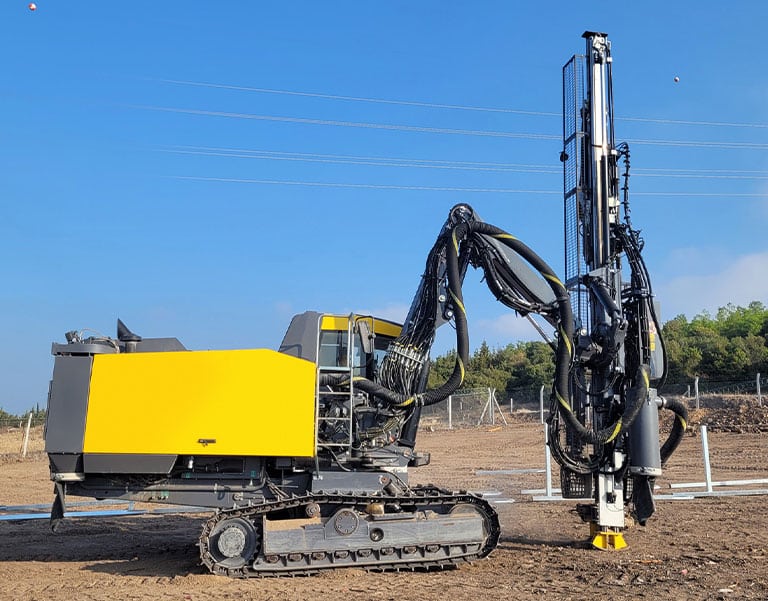Nationwide Directional Boring for Underground Utilities & Pipeline Installation
Directional boring is one of the most efficient ways to install underground utilities without open excavation. It’s how Crigger Power started—and it’s still at the core of what we do.
Our team uses directional boring to drill precise underground paths for conduit, telecom lines, gas mains, sewer systems, and more. We bore beneath highways, railroads, buildings, and active job sites without disturbing the surface or disrupting operations above ground.
Clients choose Crigger Power because we don’t delay or outsource. We bring our own crews, our own gear, and a deep understanding of how to drill through all kinds of terrain, including rock, clay, and flood zones.
We’ve completed directional boring projects across energy, utility, telecom, and cold storage sectors. If you need a clean bore, a tight timeline, or a jobsite that stays intact, we’ll drill it and drill it right.
What is Directional Boring?
Directional boring is a trenchless drilling method to install underground utilities without tearing up the surface. It allows crews to bore beneath roads, sidewalks, parking lots, and buildings to run conduit, water lines, fiber, or power.
Unlike traditional trenching, directional boring keeps the job site intact. It’s faster, cleaner, and ideal for hard-to-reach areas or projects that cross active infrastructure. At Crigger Power, we use our crews and gear to handle the full bore—from setup and pilot hole to pullback.
We don’t rent machines or wait for outside help. Our team drills clean, accurate utility paths with minimal disruption and complete control. If it needs to go underground, we know how to bore it.

Directional Boring Services for Utilities & Infrastructure
Directional boring isn’t one-size-fits-all. Every site brings different soil, specs, and infrastructure challenges. Crigger Power adapts our trenchless services for the terrain—whether we’re drilling through rock, boring under highways, or installing utility lines in urban zones. These sections break down how we handle directional boring across different applications.
Directional Boring FAQs
Directional boring is one of the most versatile and efficient trenchless methods available, but it raises a lot of questions before the drill ever hits the ground. Whether you’re planning a new utility line, navigating permit requirements, or just want to understand what the process looks like, we’ve got you covered.
Below, you’ll find answers to the most common questions our team gets about directional boring, including how it works, what it costs, and how Crigger Power keeps projects moving without delays or damage.
If you don’t see your question, check out our Blogs and FAQs page for more information.
Yes. Directional boring can be performed in rock, clay, or other tough subsurface conditions, but it takes the right gear and experience. Crigger Power brings full HDD rock drilling capabilities to every job that demands them, including reinforced drill heads, specialized mud systems, and high-powered rigs capable of cutting through dense material.
Our team has successfully bored through bedrock, fractured shale, and heavily compacted ground on jobs where other contractors walked away. We evaluate site conditions in advance, choose the right drilling plan, and adapt as needed.
Whether it’s a short bore through layered clay or a long run under solid limestone, we know how to manage cuttings, protect tooling, and keep bores on line and grade—even when the ground fights back.
Directional boring supports a wide range of underground utility installations, including:
- Communication Lines: Fiber, broadband, and coaxial cables
- Electrical Conduit: Low and high-voltage power lines
- Water & Sewer Lines: Including stormwater and wastewater systems
- Gas Lines: For residential and commercial projects
- EV Charging Conduit: Including long-distance trenchless pulls
Our crews tailor each bore to the type of infrastructure being installed for proper alignment, depth, and finish.
Unlike trenching, directional boring does not require digging open paths. This means less surface disruption, faster timelines, and fewer restoration costs—especially important in paved, landscaped, or high-traffic areas.
Directional boring also works better in unstable or wet soil conditions, and can reach under structures or roadways that trenching simply can’t access. For clients, that means a smoother project from start to finish with fewer delays and cleanup costs.
Directional boring is ideal when surface disruption must be minimized. It’s often chosen for:
- Urban Zones: Where trenching would block traffic or sidewalks
- Environmentally Protected Areas: Like wetlands or waterways
- Rocky or Unstable Soil: When the trench walls may collapse
- Developed Sites: To avoid disturbing existing pavement, turf, or infrastructure
Crigger Power evaluates each job site to confirm whether directional boring is the best approach, and we adjust based on real-world conditions to stay on schedule.
Our directional boring rigs can handle long, precise bores at a wide range of depths depending on the project requirements.
We’ve completed pulls that run hundreds of feet under highways, fields, and parking lots. With proper planning and soil data, our crews can bore deeper or farther than most standard contractors, especially when tight tolerances are required for power, water, or telecom conduit installs.
Contact Crigger Power About Directional Boring
Crigger Power handles directional boring projects others won’t touch. We drill under roads, trench utility paths through tight spaces, and keep the site clean while doing it. Our crews bring the gear, the grit, and the know-how to finish the job without delays.
Contact us today to get your directional boring project started.
